
Annandale's Original Commercial District
By: M. Callahan
Until 1685, the crossroads site of Little River Turnpike, Annandale Road, and Columbia Pike in Annandale was home to an Indian Trading Post. Later, Col. William Fitzhugh acquired the property along with 22,000 acres from the Jamestown Colonial Government. He sold some parcels to raise cash prior to 1776, and farmed the rest through agents, never personally residing there. Several parcels of land were granted to homesteaders after the American Revolution, by the Commonwealth of Virginia government. Under this arrangement, prospective owners were required to inhabit the land, and to seat and plant within three years. Annandale was carved out of the northern region of what became known as the Ravensworth Plantation.
Settlers from Scotland, inhabited Annandale in 1685. The name ANNANDALE was derived from the Annan River, and the community these Scotsmen had left behind in their beloved dales. In Annandale, they found a rolling terrain of heavily forested land, rich soil, plentiful water sources, and abundant wildlife including elk, white tail deer, beaver, and bear. With ample protein sources for food, fresh water and hardwood forests, settlers discovered a perfect location on which to establish a community.
Clearing relatively small parcels of land (5-10 acres) was an arduous, but rewarding task, since the soil here was fertile, and these fields would produce excellent crops. At that time and even into the early 20th century, these small farmers raised pigs as a consumable commodity as well as a cash commodity. Corn and wheat were planted to feed both livestock and family. Perceptive planters, such as these, diversified into trade rather than becoming dependent on the volatile tobacco and cotton markets that drove the earlier and much larger colonial properties.
Since raising cattle requires large grazing pastures, and additional fields in which to plant hay for winter feeding, only small herds were kept on the modest Annandale farms, which ranged in size from 10-160 acres. Instead, raising pigs became a wide spread practice from Springfield to Tysons. Pigs require no grazing land, propagate quickly, and can be kept in relatively small spaces. Consequently, pigs, goats, chickens, ducks, geese, the family cow or a few, and the necessary work horses were the average livestock found.
Many local farmers were also trained craftsmen who built furniture during the winters, when fields did not need tending. In addition to the white oak, a plentiful supply of black cherry, poplar, chestnut, locust, hickory, and walnut trees grew locally.(1) A steam driven sawmill was opened in the 1820’s by William Garges, a Pennsylvania native who settled in Annandale around 1806. He initially purchased 138 acres in what became the historic town center and added eight more acres on the south side of Little River in later years. There has been some debate as to the site of his first steam driven sawmill, but the most likely location was the southwest corner of Little River at Backlick.(2) A second Garges mill was built at what is now John Marr and Little River. This mill worked primarily on commissions for the long anticipated Manassas Gap Railroad.
Although the filing and leveling required for the construction of the rail bed was completed and beautiful stone trestles were built over some of the creeks, the railroad was never completed. Between the outbreak of the Civil War and depletion of capital, the rails never left Alexandria and the project was abandoned. Had the railroad come through Annandale, it would have crossed Little River at or near John Marr Drive, headed north, then west behind the current Fire House and the former Annandale Elementary School, through the Annandale Community Park, and into Fairfax. Unfortunately, the closest rail service ever came to Annandale was the Burke Station.
Garges, an Ironmonger and Ferrier by training, also established a smithy and livery business at his homestead along Little River where Walgreen’s is now located. Here, metal (mostly iron, but not exclusively) farming tools such as plow blades, shovels, and picks were crafted. Pots and pans, nails, latches & hinges for doors and trunks, drawer pulls, and any number of household implements were also made. He and his sons also operated a Traveler’s Inn on the northeast corner of Little River at Backlick, and established a plow and wagon factory in the 1840’s on the south side. Commercial enterprises popped up throughout the crossroads, but the Garges family must be credited with establishing the first of many.
(1) The great find in Annandale forests was the abundant white oak and black locust which was used to build homes, wagons, floors, rail and posts, and when seasoned, become excellent firewood, since it produces not just light but tremendous heat. Firewood was utilized again during WWII when heating fuel was expensive and carefully rationed. Most Annandale homeowners closed all but essential rooms in their homes, and heated by fireplace, using white oak whenever possible.
(2) A sawmill was located on the southeast corner of Little River at Backlick during the colonial era, predating the Garges Mill.
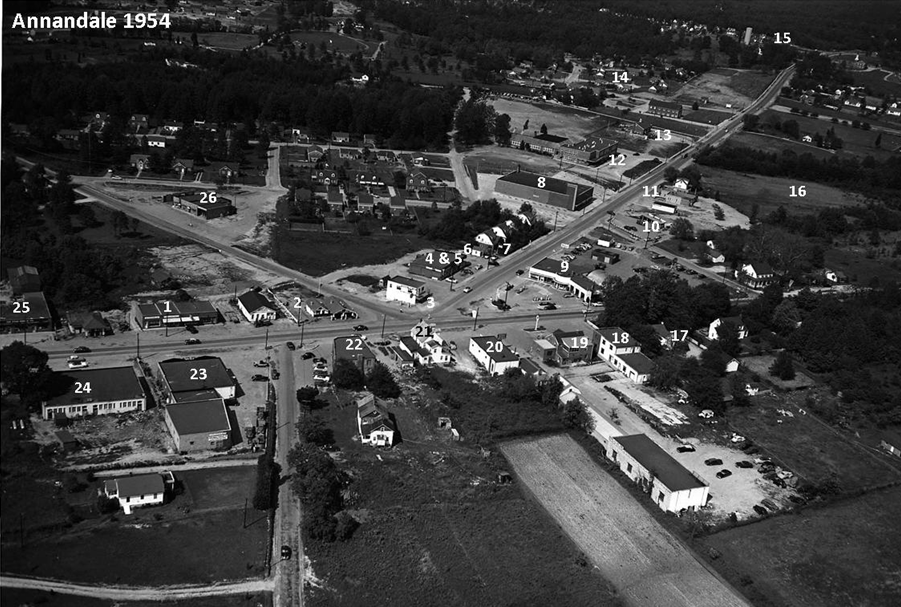
1. Annandale Beauty Salon, Kiddie Shop, Mike’s Barber Shop
2. Preston Thomas Service Station
3. Annandale Variety Store
4. Annandale Grill
5. Leeway Furniture Co.
6. Annandale Community Cab
7. Uhler Insurance & Real Estate
8. The first Safeway Grocery store, now occupied by Bank of America
9. Willis Service Center, Esso Products and Kaiser-Frasier Sales
10. Tony’s Market
11. Annandale Dry Cleaners
12. Annandale Elementary School
13. Annandale Fire Department
14. Future site of Annandale Shopping Center (1956)
15. Water storage towers operated by the Annandale Water Company
16. Future site of Giant Food (1962)
17. Home of Senator Omar Hirst
18. Bank of Annandale, McWhorter Surveyors & Developers, Offices of Dr. Cooper, MD.
19. Mettauer Bros. General Store & Texaco, Frank’s Caterette
20. The Annandale Market
21. Pike’s Pickens (gifts, novelties, ice cream) & first location of Iva Trice Dress Shop
22. Kerlin’s Korner (convenience store), First Marie’s School of Dance upstairs
23. EW Long Plumbing, Heating, Appliances, Shoe Repair Shop
24. Ellicott’s 5 & $1.00 Store, Jay’s Family Clothiers, and Kirk’s Seafood Tavern
25. Star Supply Lumber and Hardware26. Annandale Pharmacy, US Post Office, 1st Pizza Parlor. From 1960-65 the George Mason Library was also in this building and Iva Trice Dress Shop moved here from the Variety Shop Building replacing the Annandale Pharmacy
1860 land ownership in Annandale's downtown superimposed over current developments with approximate locations of cited businesses.
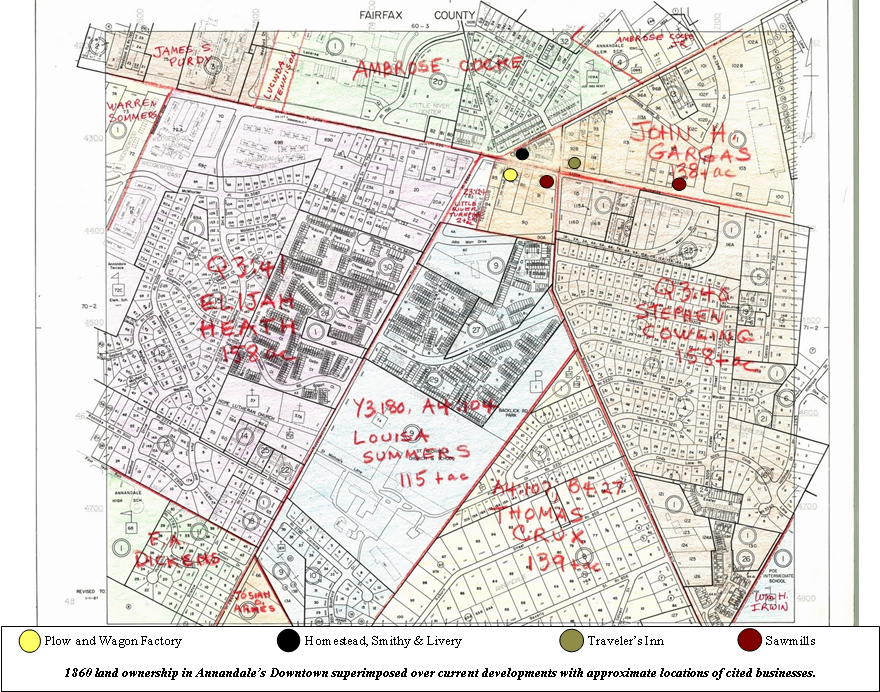
To learn more about the Black Locust Tree see: VIEW ON NATURE
Virginia’s Hard-as-Nails Tribute …from Jamestown Onward
SPECIAL NOTE:
All too often when history is being discussed, facts are assumed when no explanation for an event or experience can be documented. What is the "most logical" is proposed to fill in the blank as is often done with gaps in family or community history. After a time in the public lore, the assumption becomes fact (even though it has never been proven to be fact) in the minds of many.
One example is the origin of the name of John Marr Drive in Annandale. The "assumption" proposed and now often believed to be fact is that it was named for a John Quincy Marr who Wikipedia tells us," was a Virginia militia company captain and the first Confederate soldier killed by a Union soldier in combat during the American Civil War. Marr was killed at the Battle of Fairfax Court House, Virginia on June 1, 1861. Marr grew up in Warrenton and is not reported to have come any closer to Annandale than Fairfax Courthouse.
Instead, it it far more likely that the road was named for a local resident whose company, Marr, Incorporated, carried his name. 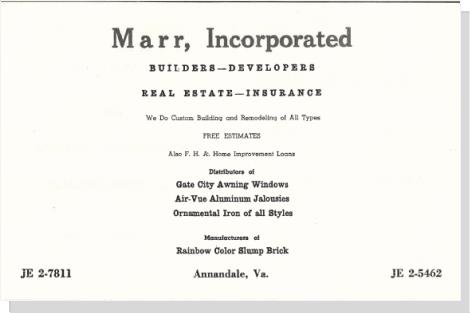
If you examine the names of builders and large property owners in early Annandale, you will notice a pattern of streets being named for them, their children, and sometimes to honor their parents. (**See a list below.) This is not a practice exclusive to Annandale. Indeed, many communities trace the names of streets, parks, creeks, meadows, and any gathering spot to the name of the first known owner, developer or a beloved member of the community wished to be honored or even just remembered. It is far more likely that Annandale's John Marr Drive, created when the K-mart property was developed in the 1970's, was named for this builder/developer than for a civil war soldier who had NO known association with Annandale.
If anyone has definitive information regarding this subject, please email info@annandalechamber.com and place JOHN MARR in the subject line. We look forward to hearing from you.
** Names chiefly honoring Annandale builders/property owners and their families.
Oliver Avenue
Hummer Road
Kerns Road
McWhorter Place
Carrico
Broyhill Crest
Malcom Street
Trammell Road
Linda Lane
Cindy Lane
Rolf Heights
MacGregor Court
Murray Lane
Wilburdale
Reproduction of this article or photographs requires the written permission of the author and The ENDEAVOR News Magazine. Photographs are courtesy of the Annandale Chamber of Commerce photographic archive.
(Copyright © 2012 Annandale Chamber of Commerce. All rights reserved. (Photographs & images, on this page, and on this website, are not available for use by other publications, blogs, individuals, websites, or social media sites.)
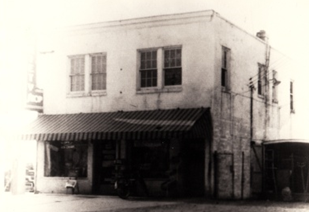
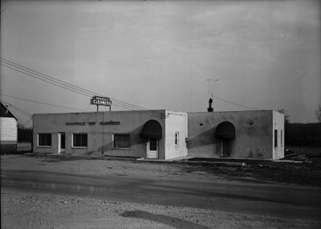
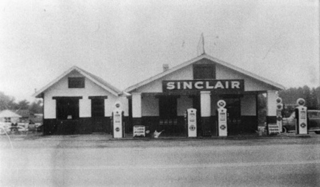
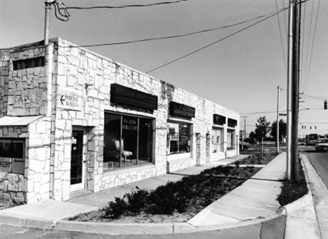
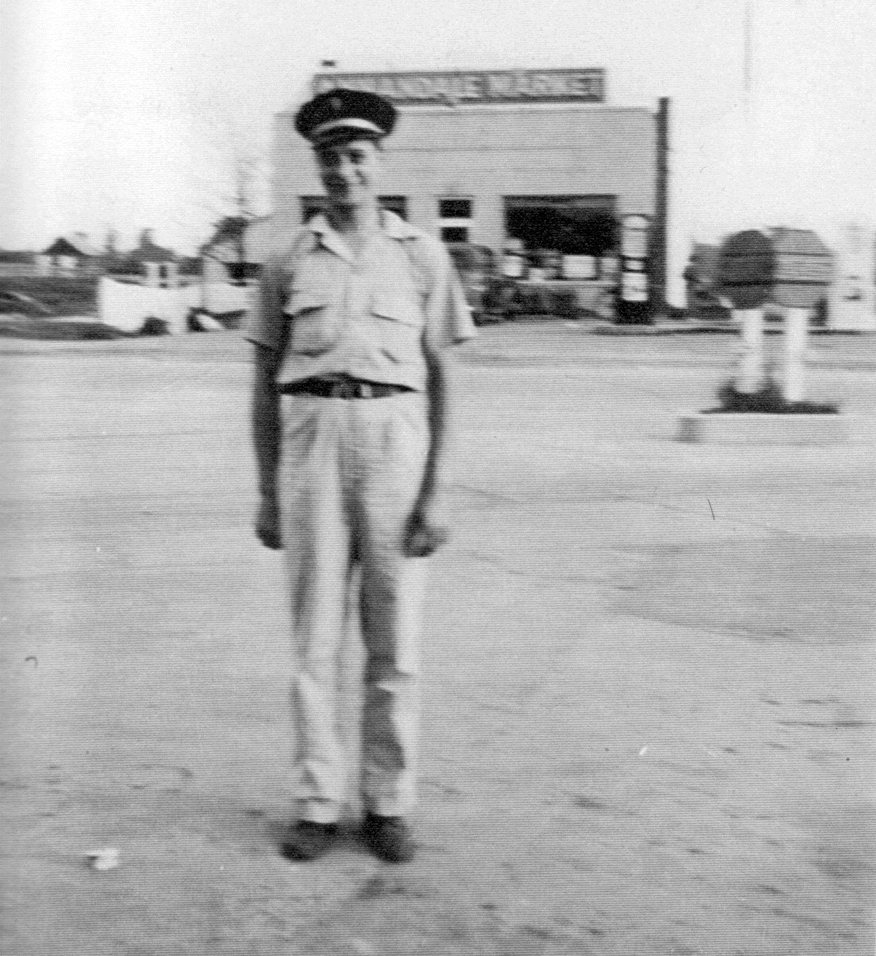
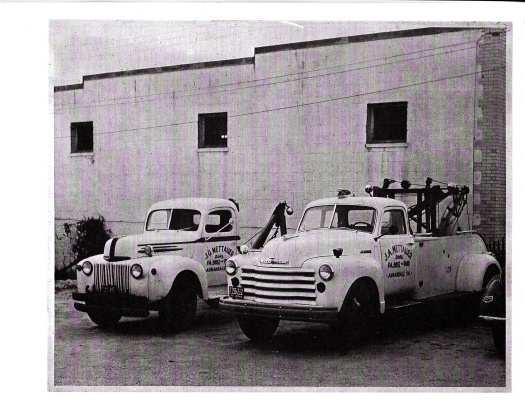
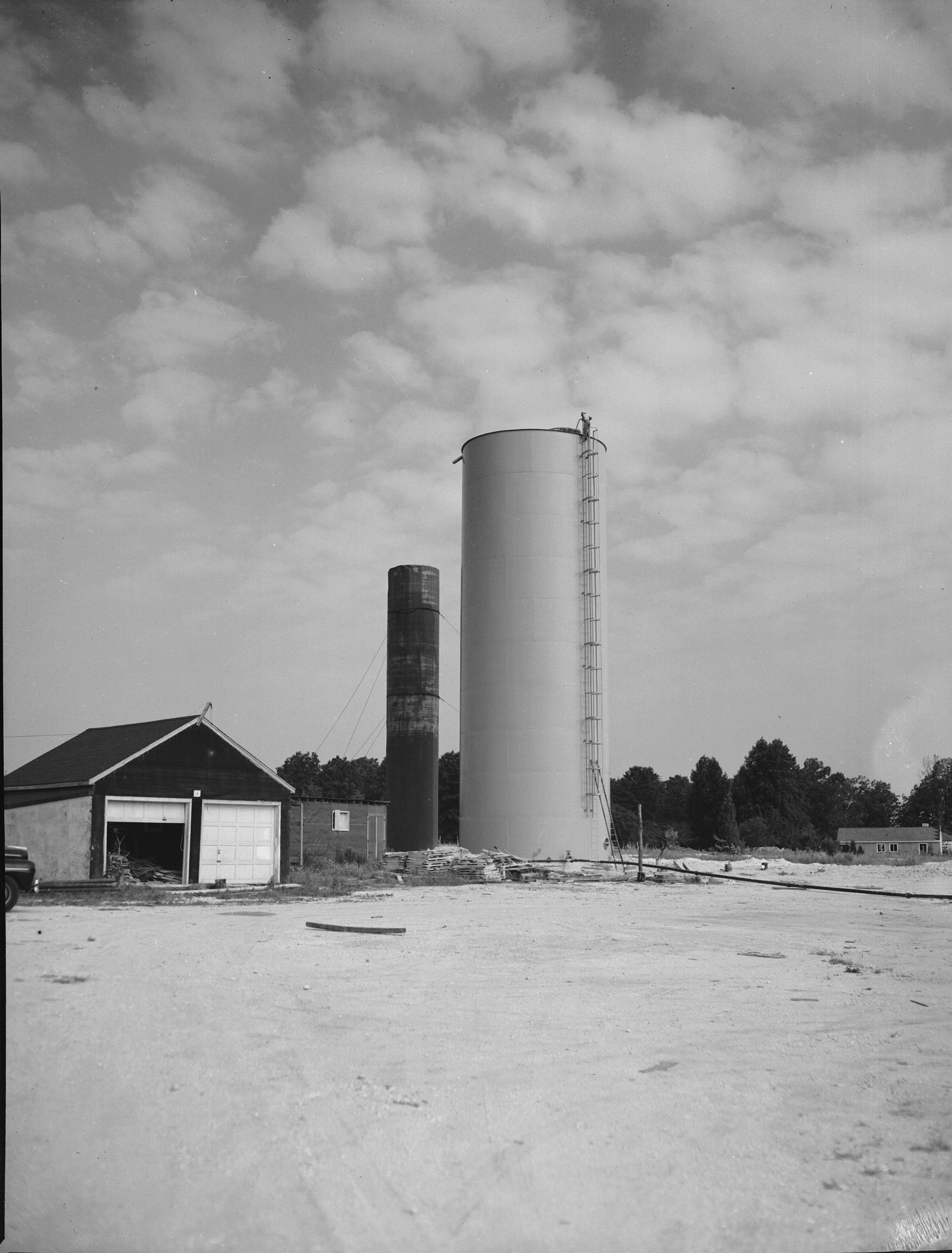
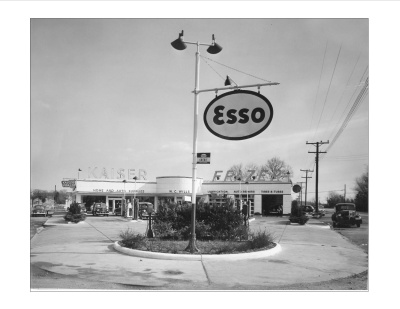

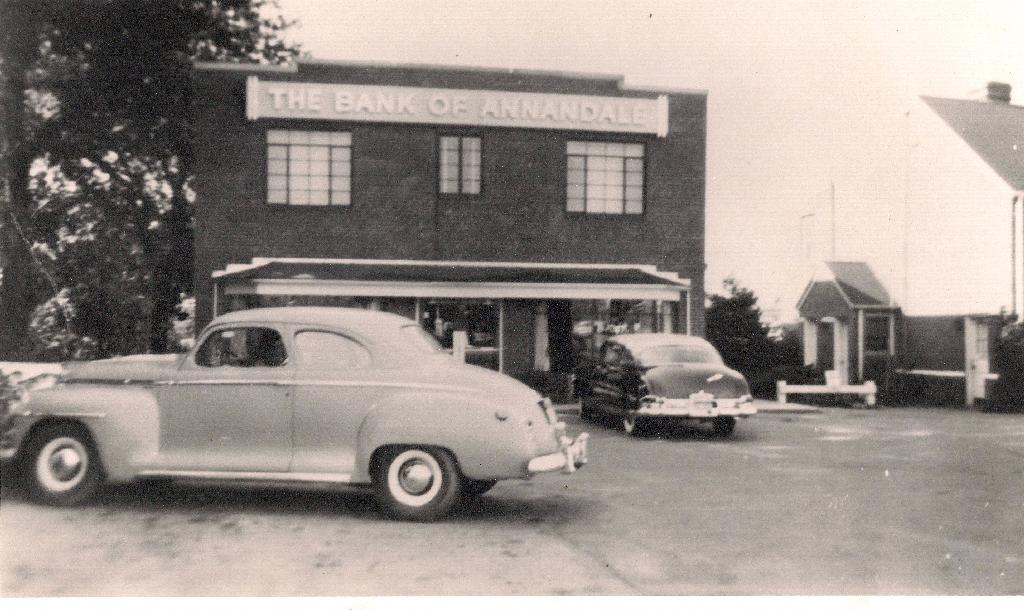
Unless otherwise noted, photographs are from the Annandale Chamber of Commerce Archive, with all rights reserved. (Copyright © 2012 Annandale Chamber of Commerce. All rights reserved. (Photographs & images, on this page, and on this website, are not available for use by other publications, blogs, individuals, websites, or social media sites.)
Copyright 2012 Annandale Chamber of Commerce. All rights reserved. Privacy Policy

